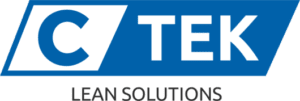How can apparel manufacturers implement lean
Lean is a valuable tool that can benefit many industries. While lean’s benefits are widely recognized in the manufacturing industry and related sectors, one industry where you may not think to find it is the apparel industry. However, the apparel industry benefits tremendously by implementing lean’s principles into its practices. If you are in the apparel industry and wondering how a lean approach can help your business, the knowledgeable staff at C Tek gladly explains.
What is Lean?
Lean dates back to the original Toyota Production System (TPS) created in Japan. The system is employed by businesses around the world. The core focus is to identify and eliminate waste, which includes various activities that do not add value. By eliminating processes and activities that don’t add value or improve efficiency, companies ultimately make their processes more efficient and productive. By incorporating lean’s principles and practices into the production cycle, companies can enjoy many benefits including increased productivity, a higher production rate, and more profit. Quality improves and costs decrease as well.
How Does the Apparel Industry Benefit From Lean?
Apparel companies of all sizes and backgrounds can benefit from implementing lean’s principles into their daily practices. Waste reduction is a key benefit for companies in the apparel and textile industry. There are some areas of waste that are unique to the apparel industry, including packaging, sewing, and cutting. These three areas of waste in particular tend to reduce efficiency and increase business costs more than any other kind of waste. Along with reducing output and increasing revenue, these areas of waste can cause problems such as defects and poor quality in end products. Therefore, it is important to identify problem areas of waste and craft effective solutions as quickly as possible.
Tools to Identify Waste
Using several tools, companies can identify and eliminate activities that add value and those that don’t. Two of the most popular and effective tools available are called Kaizen and 5S. Both can be used to categorize activities based on the value that they do or don’t provide. Activities that add value transform materials and enhance the final product. Activities that do not add value, on the other hand, cost businesses money but do not ultimately improve a final product. However, companies should note that some essential activities can fall under this category, such as transporting products from one place to the next.
TIMWOOD
TIMWOOD is an acronym used to describe the seven most common types of waste. The categories include:
- Transformation
- Inventory
- Motion
- Waiting
- Overproduction
- Over-processing
- Defects
Transformation identifies areas where transportation can be reduced or eliminated to reduce transportation time while still ensuring that materials and products are delivered to their destinations on time.
Inventory includes items that are used in the manufacturing process or resources within a factory. Properly using fabric to reduce waste can help maintain a leaner inventory.
Motion refers to the training of workers so that their movements are most efficient. Motion also includes improving the safety and efficiency of a workplace to make workers safer and more efficient during their shifts.
Waiting is the time from one activity to the next. Wait time can be reduced by minimizing delays across the production cycle.
Overproduction is defined as creating a surplus of products that are not necessary at the present time. Cutting and sewing are two major areas of waste.
Over-processing means performing a task or creating an end product that is not required by or wanted by a customer. Implementing a self-check process can eliminate this issue.
Defects can cost time and effort, and they can lead to unhappy customers. Implementing proper inspections can reduce defects.
To learn more about lean’s benefits in the apparel industry, ask C Tek today.
